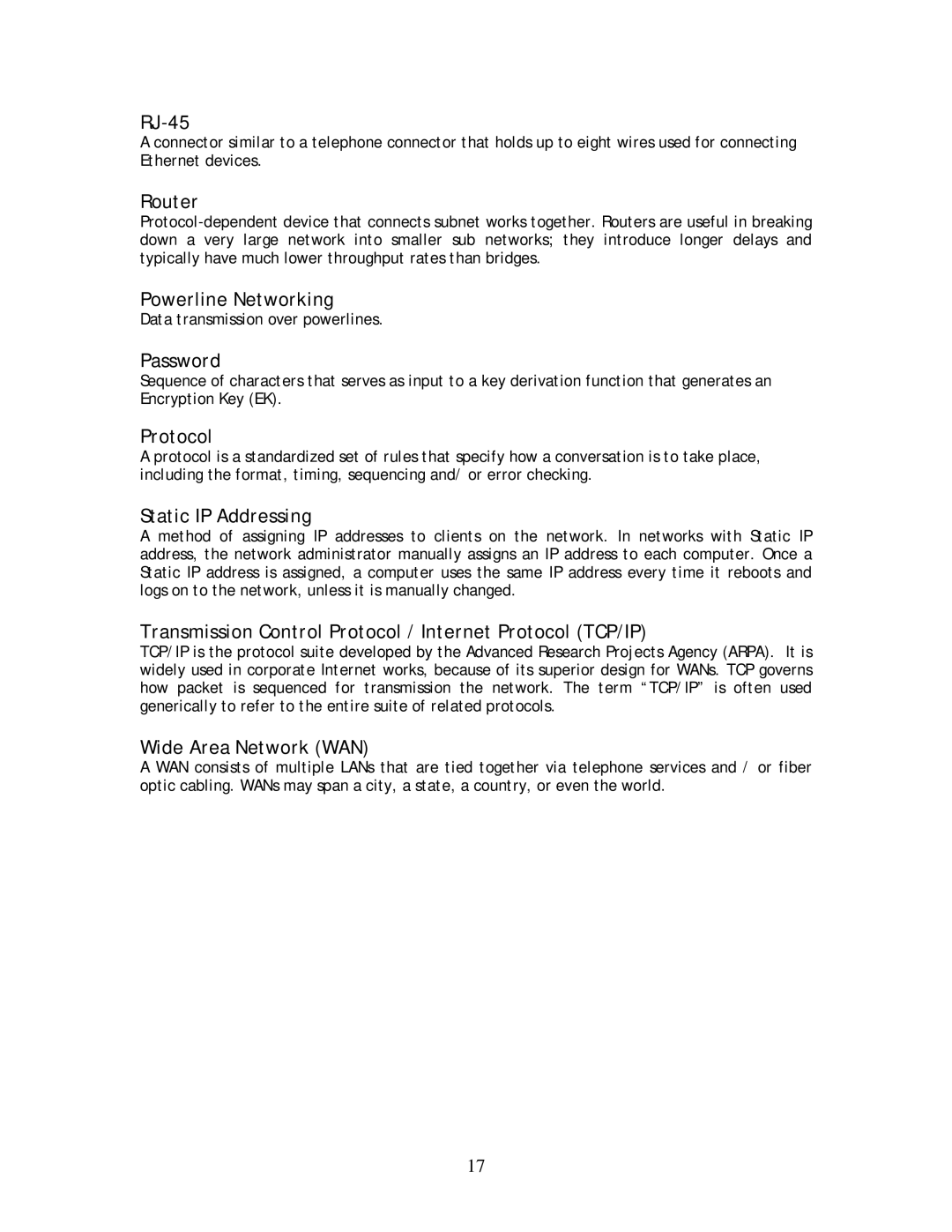RJ-45
A connector similar to a telephone connector that holds up to eight wires used for connecting Ethernet devices.
Router
Powerline Networking
Data transmission over powerlines.
Password
Sequence of characters that serves as input to a key derivation function that generates an Encryption Key (EK).
Protocol
A protocol is a standardized set of rules that specify how a conversation is to take place, including the format, timing, sequencing and/ or error checking.
Static IP Addressing
A method of assigning IP addresses to clients on the network. In networks with Static IP address, the network administrator manually assigns an IP address to each computer. Once a Static IP address is assigned, a computer uses the same IP address every time it reboots and logs on to the network, unless it is manually changed.
Transmission Control Protocol / Internet Protocol (TCP/IP)
TCP/IP is the protocol suite developed by the Advanced Research Projects Agency (ARPA). It is widely used in corporate Internet works, because of its superior design for WANs. TCP governs how packet is sequenced for transmission the network. The term “TCP/IP” is often used generically to refer to the entire suite of related protocols.
Wide Area Network (WAN)
A WAN consists of multiple LANs that are tied together via telephone services and / or fiber optic cabling. WANs may span a city, a state, a country, or even the world.
17
